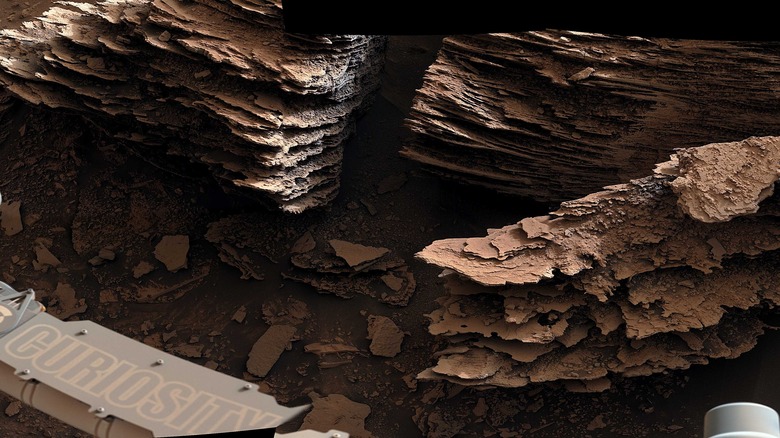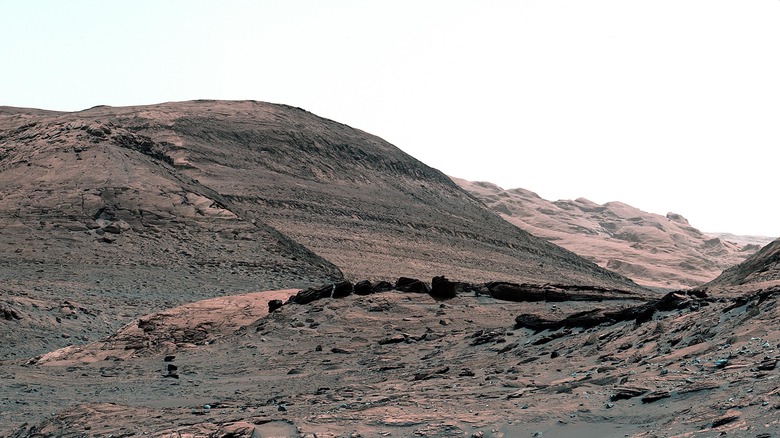The Curiosity Rover Snapped Stunning Images Of Mars Landscapes Shaped By Water
Mars is dry and arid now, but millions of years ago it had water flowing across its surface in rivers and lakes, and it may even have looked a lot like Earth (via NASA). Even though that water is long gone, evidence of it remains in the rocks and surface features that are still visible on the Martian surface. NASA's Curiosity rover has snapped photos of structures in the Gale Crater that were formed by streams, adding to the scientific knowledge about the history of water on Mars.
The flakey rocks imaged using its Mast Camera are layered in a way that suggests they were formed in either a small pond or in the bed of a stream (via JPL). They were spotted as Curiosity moved from an area rich in clays at the base of a mountain called Mount Sharp and toward a region that is rich in sulfate, which is higher up the mountain. As the rover ascends the mountain, the types of rock it is seeing are changing — there's less evidence of lakes and more of smaller streams.
"We no longer see the lake deposits that we saw for years lower on Mount Sharp," said Curiosity project scientist Ashwin Vasavada. "Instead, we see lots of evidence of drier climates, like dry dunes that occasionally had streams running around them. That's a big change from the lakes that persisted for perhaps millions of years before."
Curiosity marches on
Curiosity is coming up on its 10th birthday on Mars, having landed on August 5, 2012. Its hardware is still going strong despite the harsh Martian environment, which includes low temperatures, sharp rocks, and dust storms. The rover did recently suffer an issue, however, which caused it to go into safe mode for a few days. NASA announced that there was a high temperature recorded inside Curiosity in an instrument control box, and the safe mode was automatically activated to prevent any damage from an unknown problem.
The engineers aren't sure what caused the problem, but they think it might have been a faulty sensor reading rather than an actual issue with the rover hardware. Curiosity soon resumed its science operations and was able to collect data from its various instruments as usual. There is one long-term issue with the rover's hardware, though, and that is the wear and tear on its wheels. The rover's wheels have been damaged by the sharp rocks on the Martian surface during the rover's decade of driving, and they're showing holes and tears in the treads, called grousers. The rover can still maneuver as usual, but the team is careful with how they drive to minimize the damage.
"We have proven through ground testing that we can safely drive on the wheel rims if necessary," said Curiosity project manager at NASA's Jet Propulsion Laboratory, Megan Lin. "If we ever reached the point that a single wheel had broken a majority of its grousers, we could do a controlled break to shed the pieces that are left. Due to recent trends, it seems unlikely that we would need to take such action. The wheels are holding up well, providing the traction we need to continue our climb."

